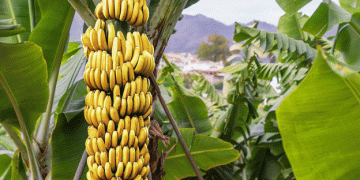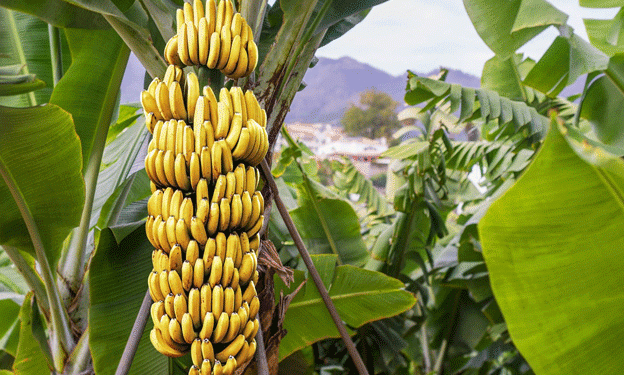In June 2024, Ecuadorian banana exports recorded a slight decline, with 188.99 million boxes exported, representing a 1.04% decrease compared to the same period in 2023. The drop is largely attributed to a significant reduction in exports to Russia, which fell by 18.13%. Despite this, the European Union (EU) continues to be the largest market for Ecuadorian bananas, accounting for 30.11% of the total exports.
Market Shifts and Regional Insights
- European Union: The EU remains the leading destination for Ecuadorian bananas, underscoring the region’s consistent demand for this staple fruit. The stable market share within the EU highlights the strong trade relations and the continuous preference for Ecuadorian bananas among European consumers.
- Russia: The most notable decline in exports was seen in Russia, where economic and geopolitical factors have contributed to an 18.13% decrease. This significant drop impacts the overall export numbers and presents a challenge for Ecuadorian exporters to find alternative markets.
- United Kingdom and Middle East: Exports to the United Kingdom and the Middle East have also seen reductions. These markets have experienced fluctuations due to varying consumer preferences and competitive pressures.
- United States and Africa: Contrastingly, exports to the United States and Africa have increased. This growth indicates successful market penetration and diversification efforts by Ecuadorian exporters. The increasing demand in these regions provides a buffer against declines in other markets.
- Chile’s Plant Protection Standards: The high phytosanitary standards in Chile have intensified competition in other markets. Ecuadorian exporters need to adapt to these stringent requirements to maintain and expand their market presence.
Key Players in the Export Market
Major shipping companies such as MSC and Maersk continue to play crucial roles in the transportation of Ecuadorian bananas, with the port of St. Petersburg being a significant destination despite the overall decline in Russian imports. Companies like Ubesa, Interbananaexport, and Frutadeli have reported increases in their export volumes compared to June 2023, showcasing their ability to navigate market challenges and capitalize on growth opportunities.
The slight decline in Ecuadorian banana exports in June 2024 reflects the complex interplay of global market dynamics. While the decrease in exports to Russia poses a challenge, the steady demand from the EU and growing markets in the United States and Africa provide opportunities for growth. Ecuadorian exporters must continue to diversify their markets and adapt to changing conditions to sustain their position in the global banana trade.































